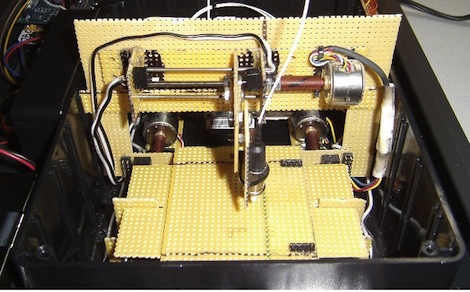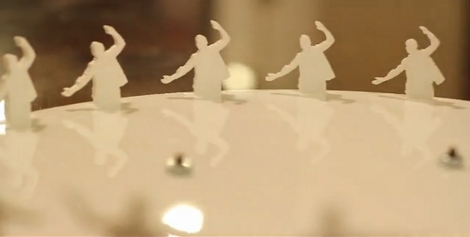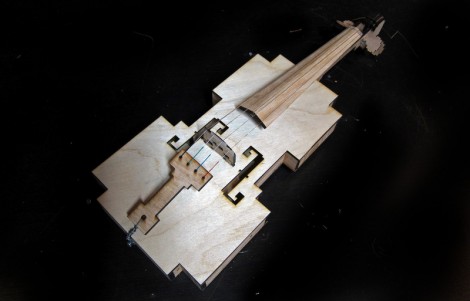
When the Louisville hackerspace LVL1 was discussing the purchase of a new laser cutter, a member said, “I could build one before you get around to buying one.” The gauntlet was thrown down, a challenge was set, and the race was on to build a tiny laser cutter before the hackerspace took delivery of their new laser cutter.
The mechanical aspect of the build is fairly simple. The X axis is simply a stepper motor, threaded rod and laser module mounted on a carriage. This carriage moves along the Y axis with the help of two stepper motors for either side. Everything was mounted on more perfboard than reason would suggest.
For the electronics of the project, three motor drivers were made with a few logic chips and the laser firing relay was stolen from test equipment developed for LVL1’s trans-Atlantic balloon build. Motor and laser control was handled by an Arduino to keep the build simple because the contest was over after the first laser was finished cutting a square.
LVL1 is now working on a second version of the winner of the laser cutter challenge. They’re planning on a touchscreen interface that will cut a plastic blank about the size of a credit card. We can’t wait to see the results of that build.
















